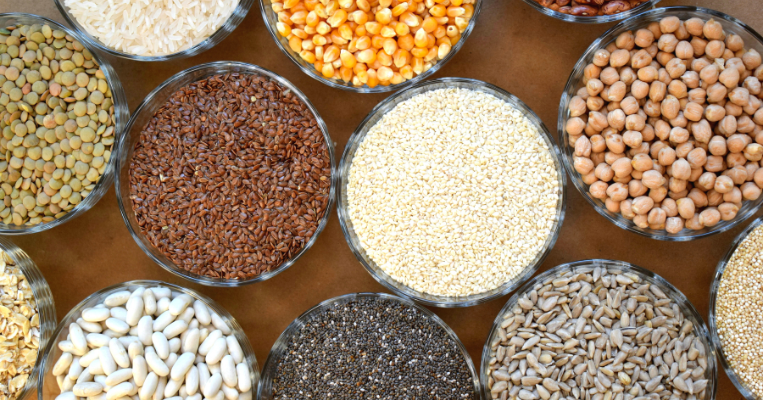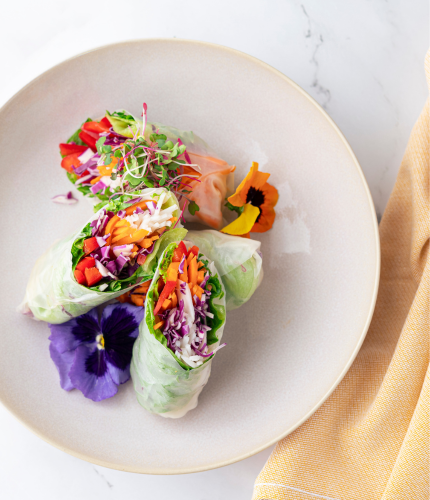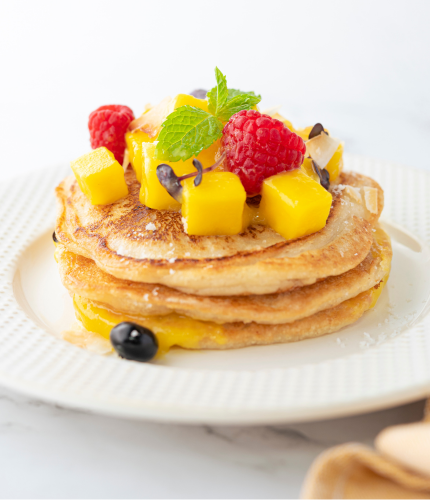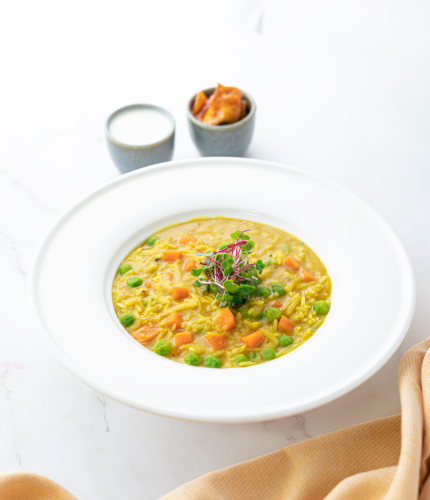
27 February 2023
My Most Used Vegan Ingredients

Protein and Carbs
No matter how long you’ve been vegan, the one question you hear time and time again is: “where do you get your protein?” And, while protein is, of course, incredibly important, it’s only one of the three macros you need to maintain a balanced diet. Fortunately, there are plenty of delicious, affordable and easily accessible vegan protein sources. My pantry staples are tofu, mushrooms, chickpeas and lentils.
Tofu: There’s a reason tofu is one of the most popular meat alternative proteins amongst vegans. It’s so versatile. Fried, blended, crumbled, sauteed, baked or even eaten raw – there are countless ways to enjoy tofu. One of my favourites is a breakfast of tofu scramble.
Mushrooms: Full of wonderful nutrition, mushrooms are often misunderstood. They’re disliked by people who haven’t given them a chance to impress their taste buds. Mushrooms bring a wonderful umami flavour to any dish and can offer a meaty texture if that’s something you crave.
I really enjoy trying out the latest vegan dishes at restaurants and cafes. But, you can’t quite beat the satisfaction of cooking yourself a wholesome and nutritious meal using vegan ingredients.
I was a vegetarian for many years before committing to veganism, so I’ve always found food and nutrition interesting. It’s why I went to study the subject at university and started my own plant-based food business, Plant Essence. And, while I love cooking vegan food at home, I understand that for some, stepping into a kitchen and trying to rustle up a balanced, healthy and tasty meal can seem daunting – especially if venturing into plant-based cooking for the first time.
Which meat and dairy replacements should you use? Should you use them at all? Can you eat chickpeas straight from the can? (Yes, you can!) And, what on earth is aquafaba?
To set you on the path to confidently cooking vegan food at home, I’ve compiled a list of my most used vegan ingredients with tips and tricks on making the most of them.

Chickpeas: Packed with protein, chickpeas are another versatile vegan ingredient. You can add them to curries, make hummus, mash and shape them into burgers or simply enjoy them tossed into a salad. You can even use the liquid from the can, aquafaba, as a vegan egg alternative, whipping it into meringues and mouses.
Lentils: Just as useful as chickpeas, lentils are tasty in curries, salads and burgers, but they’re also a great alternative to plant-based mince meat – which can be heavily processed and full of salt. Plus, there are plenty of types to choose from, such as green, red and yellow, each providing different flavours and textures.
While carbs are the easiest macro to source as a vegan, thanks to plenty of options such as rice, pasta and bread, my favourite is the humble potato.
Potatoes – Unlike bread, potatoes are an unprocessed whole food. You can be safe in the knowledge that you’re consuming all the nutrients they have to offer. And, like many of my staples, they are incredibly versatile and can be enjoyed in both healthy and more indulgent ways for a balanced vegan diet.
Sweet Treats

It’s no secret that I am a self-confessed dessert lover (check out my recent blog to see some of my top guilt-free vegan treats). Since veganism has soared in popularity, supermarkets are brimming with an increasing range of plant-based alternatives for chocolate, cakes, ice creams, cookies and more.
While I am glad to have more options for indulgence, I prefer to opt for natural sources to keep my mind and body in balance. Bananas and agave are my go-to healthy vegan ingredients to satisfy my sweet cravings at home without giving in to highly processed alternatives.
Bananas: Delicious to eat on their own as a snack, bananas are also a great source of natural sweetness to add to cakes, smoothies, pancakes and desserts such as vegan banana ice cream.
Agave: I like to use agave as a vegan alternative to honey to drizzle on pancakes, coconut yoghurt or granola. It’s also an ideal swap for recipes that may call for processed white sugar, such as sweet chilli sauce.
Flavour
A common misconception I hear about vegan food (usually from meat eaters) is that vegan food is bland. But, this couldn’t be further from the truth! There are plenty of ways to enhance the flavour of your meals. My top three flavour enhancers are nutritional yeast, miso paste and tahini.
Nutritional yeast: A firm favourite in the vegan community, nutritional yeast is the holy grail for adding cheesy flavour to sauces and dips. It’s also a great source of vitamin B12, which can be tricky to obtain in a vegan diet without the help of supplements.
Miso paste: Available in a variety of types, the most common are white miso and red miso. Both are go-tos of mine for adding to broths, soups and stews to deepen the flavour.
Tahini: A middle eastern cooking essential, tahini is a thick paste made from sesame seeds. It is often associated with making hummus, but it has so many more uses as a vegan ingredient. Add it to sauces, stews and dressings or simply spread it on toast and enjoy.

As you can see, there are plenty of vegan-friendly ingredients you can experiment with to take your plant-based cooking to the next level in terms of flavour and nutrition. For some easy recipe inspiration, check out my favourite blender recipes and save this blog the next time you head to the supermarket to stock up your pantry!
